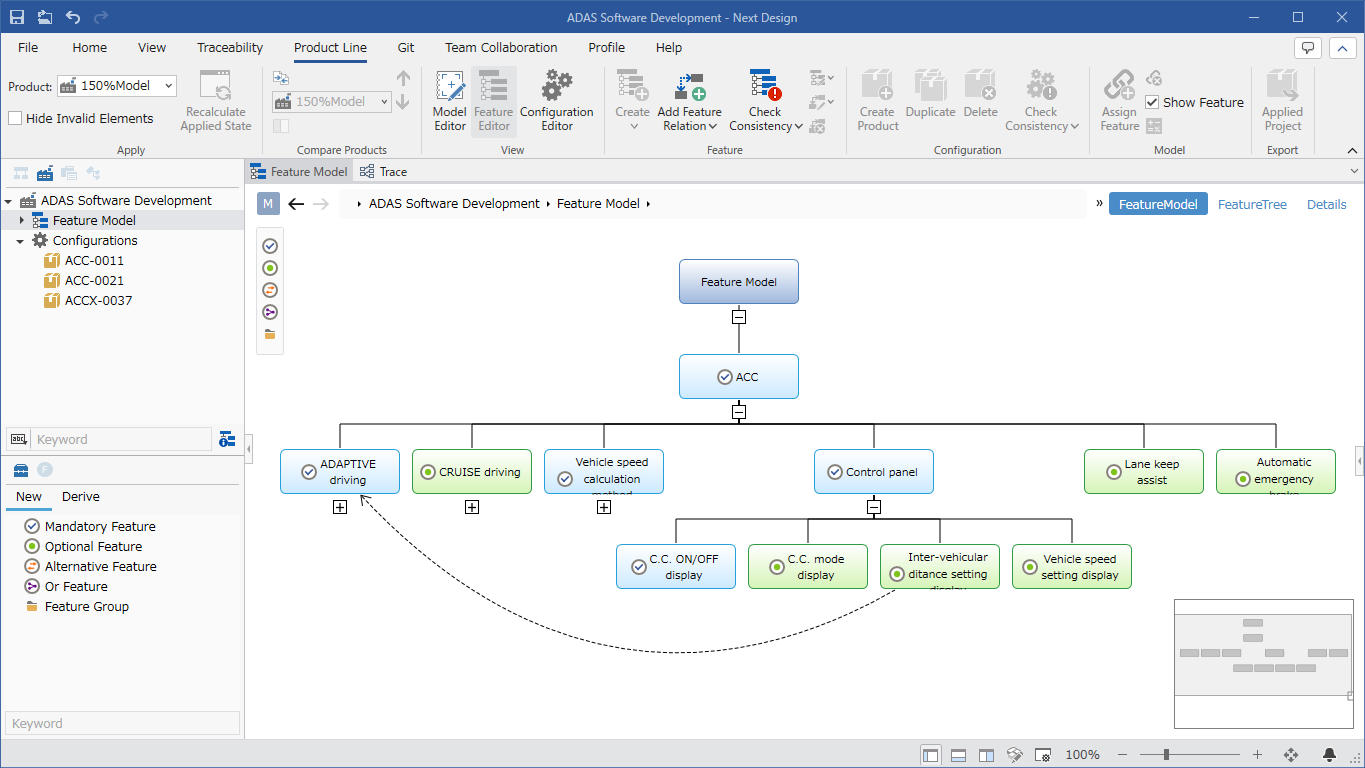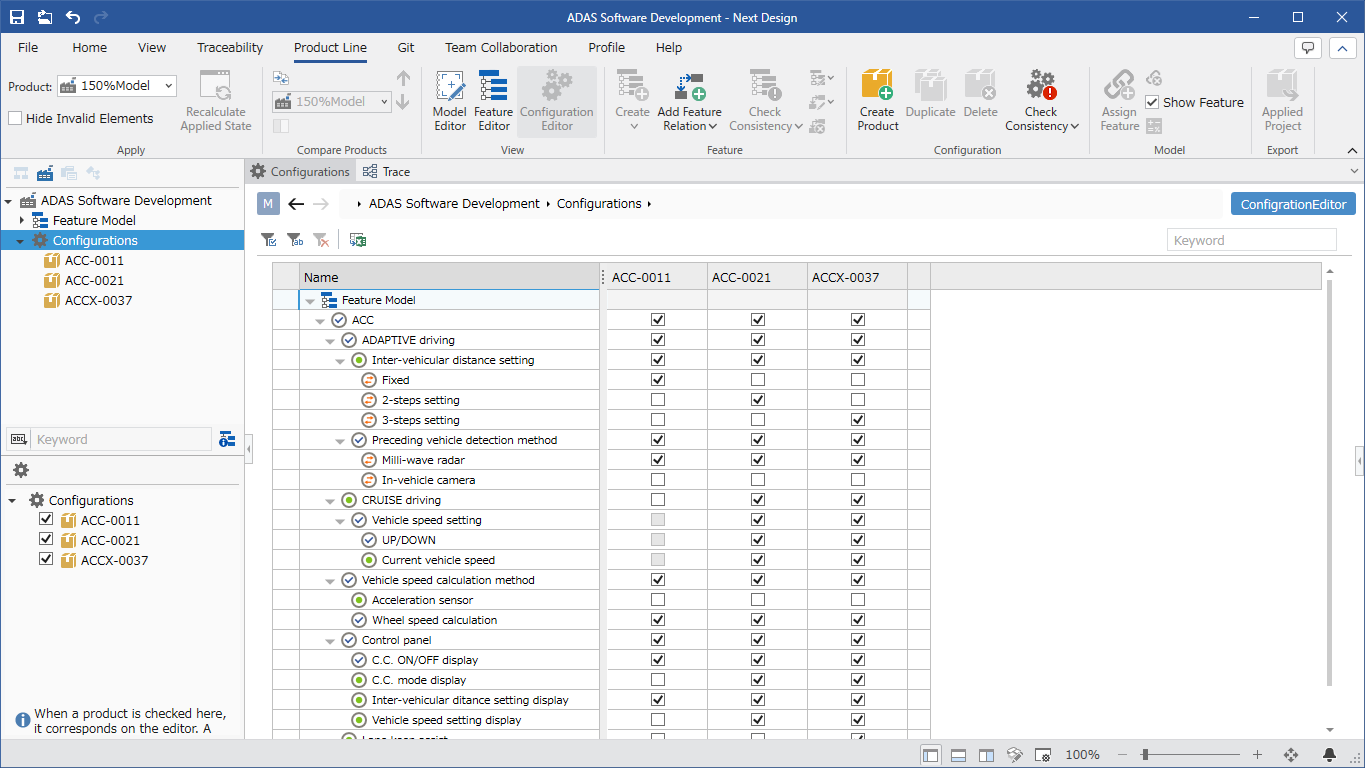Overview of product line development
Use cases
With Next Design, according to the product line development use case, you can:
| Use case | What Next Design can do |
|---|---|
| feature model definition | Product variability can be defined in the feature model in tree diagram format. |
| Product configuration | By defining multiple products and selecting valid features, you can determine per-product variability. |
| Assigning Features to Design Models | By assigning features to design models, you can identify design model variation points for features. |
| Confirmation of product applied design model | You can confirm the design model to which the product configuration is applied. |
| Exporting design models for product application | Design models after product application can be extracted as a separate project. |
screen image
-
Feature model definition screen

-
Product configuration screen

Definition of terms
| Term | Description |
|---|---|
| Feature | Focusing on the commonalities between products, elements that represent the factors of different ranges (variability) among those products Example: Differences in physical elements of products, differences in hardware, etc. can be features |
| Feature Model | A model that systematically expresses constraint relationships between features |
| Product | About the product |
| Configuration | Definition information for extracting the required product from a group of similar product-intensive systems In many cases, the configuration content for the product is determined by selecting features |
| Feature allocation | The process of associating variable factors (features) with the range (variable points) in which product-by-product differences occur in similar product-intensive system groups |
| Product application | The process of determining differences based on the selection of variable factors (features) determined in the configuration for the range (variable points) where differences occur for each product |
| Mandatory Feature | A feature that must be selected when the parent feature is selected in the configuration |
| Optional Feature | A feature that can be optionally selected or not when the parent feature is selected in the configuration |
| Alternative Feature | In the configuration, when the parent feature is selected, one of the siblings of the alternate feature must be selected |
| Or Feature | In configuration, if the parent feature is selected, at least one of the sibling disjunction features must be selected |
| Feature Group | A feature node that represents the concept of grouping multiple features in the feature model hierarchy Can define the selectable range in the configuration |
| Feature conditional expression | A logical expression that defines the conditions for enabling the combination of variable factors assigned to the range (variable point) where differences occur for each product. |